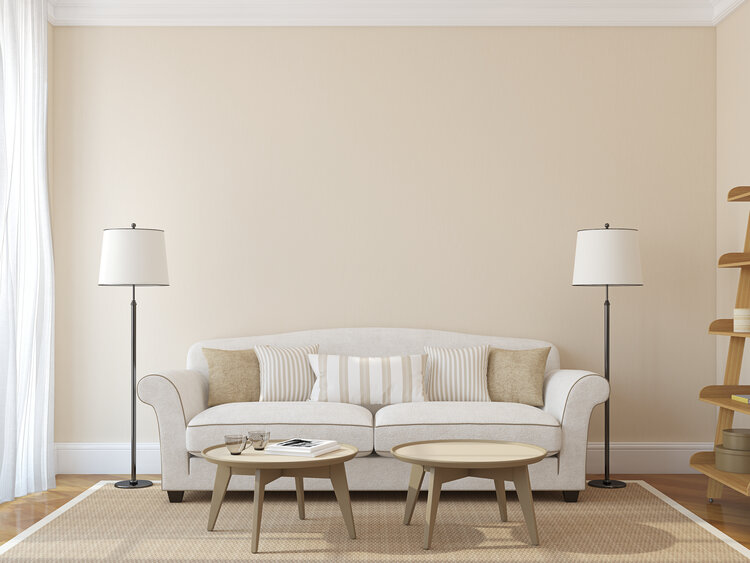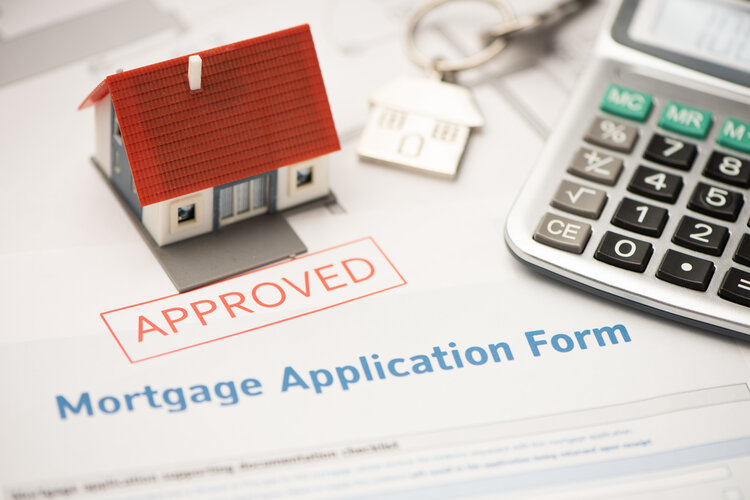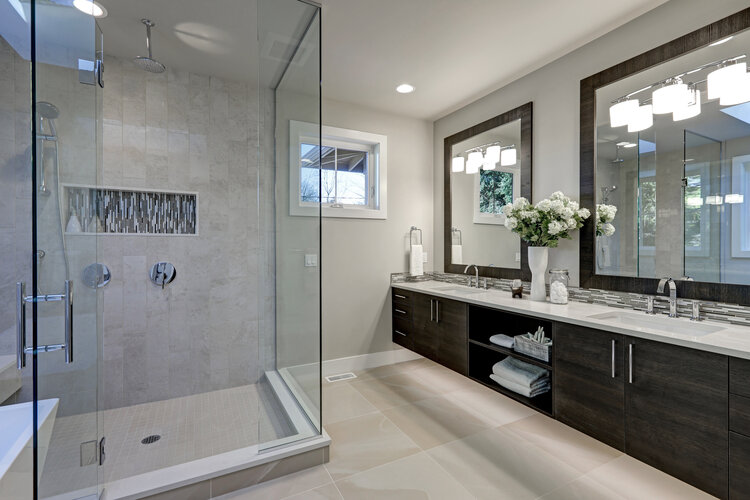What Is A Short Sale?

An increase in foreclosure rates will inevitably bring with it an increase in short sales. But what is a short sale?
A short sale happens when you sell your house for less than your remaining mortgage balance, the proceeds of which go to the lender and in return the lender forgives the remaining balance. Selling your home as a short sale is one way to avoid foreclosure.
As a general rule, lenders lose money when they foreclose on a property. Consequently, they would rather not have to foreclose if it can be avoided. A short sale represents an opportunity to cut their losses because a short sale usually allows them to recoup more of the cost of the loan than a foreclosure process would.
However, don’t think that a short sale is an easy thing to accomplish. In order to get permission for a short sale, you must provide documentation showing a genuine financial hardship. And don’t think that the decision for accepting a short sale is solely in the hands of the lender. Sure the lender must first agree, but this is not the final word. If there is mortgage insurance involved, this company also gets input on the decision. If there is an investor backing the mortgage, they also get input as to whether to accept a short sale.
The transaction process for a short sale can be rather cumbersome as well, whether you’re on the buying or selling side. Many short sales fail due to additional demands by the lender, such as requiring the broker to reduce his or her commission and/or that the seller signs a document requiring him or her to pay back the shortfall.
If you’re on the selling side of a short sale, consider having your agent or other experienced professional negotiate with your lender for a better deal. And remember, if the lender does accept a short sale and forgives part of your debt, that is considered taxable income and you must declare it as such to the IRS.
Why Waiting To Buy Is Costing You

Many people are sitting on the fence trying to decide if now’s the time to buy a home. Some are renters who have a strong desire to become homeowners but are unsure if buying right now makes sense. Others may be homeowners who are realizing that their current home no longer fits their changing needs.
To determine if you should buy now or wait another year, you need to ask two simple questions: Do I think home values will be higher a year from now? Do I think mortgage rates will be higher a year from now?
What will homes cost in a year?
If you average the most recent projections from the major industry forecasters, the expectation is home prices will increase by 7.7%. Let’s take a house that’s valued today at $325,000 as an example.
If you make a 10% down payment ($32,500), they’ll end up borrowing $292,500 for their mortgage. Applying the projected rate of home price appreciation, that same house will cost $350,025 next year. With a 10% down payment ($35,003), you would then have to borrow $315,022.
Therefore, as a result of rising home prices alone, a prospective buyer will have to put down an additional $2,503 and borrow an additional $22,523 just for waiting a year to make their move.
What will mortgage rates be in the year?
Today, mortgage rates are around 3%. However, most experts believe they’ll rise as the economy continues to recover. Any increase in the mortgage rate will also increase a purchaser’s cost. The projections average out to 3.6% among these Freddie Mac, Fannie Mae, the National Association of Realtors , and the Mortgage Bankers Association forecasts, a jump up from where they are today.
What does it mean to you if home values and mortgage rates increase?
A buyer will pay a lot more in mortgage payments each month if both of these variables increase. Assuming a buyer purchases a $325,000 home this year with a 30-year fixed-rate loan at 3% after making a 10% down payment, their monthly principal and interest payment would be $1,233.
That same home one year from now could be $350,025, and the mortgage rate could be 3.6% (based on the industry forecasts mentioned above). That monthly principal and interest payment, after putting down 10%, totals $1,432.
The difference in the monthly mortgage payment would be $199. That’s $2,388 more per year and $71,640 over the life of the loan.
Add to that the approximately $25,000 a house with a similar value would build in home equity this year as a result of home price appreciation, and the total net worth increase a purchaser could gain by buying this year is nearly $100,000. That’s a small fortune. When asking if you should buy a home, many potential buyers think of the nonfinancial benefits of owning a home. When asking when to buy, the financial benefits make it clear that doing so now is much more advantageous than waiting until next year.
Do I Need Neutral Painted Walls To Sell My Home?

“If you want to sell your home, paint your rooms beige.” That could be the rallying cry of real estate agents across the country, and for good reason. Presentation and first impressions mean everything when selling a home, and the men and women who make their living selling homes know that neutral colors will generally spark more interest from buyers than bold colors.
Human beings are sensitive to color on a deep, emotional level. This makes sense: Our earliest ancestors relied on colors to tell them if a plant was ripe or safe to eat, for example. Those deeply ingrained senses of what colors mean in nature stay with us in our cities and suburbs; we may not need to make life-and-death decisions based on the color of a strange fruit, but we still carry the emotional cues that kept our ancestors safe.
This trait can complicate things when painting a house, however. A certain hue that you think looks perfect in your living room might trigger a deep sense of discomfort in a visitor. The deeper the color you choose for your walls, the stronger effect it might have on others. Conversely, the closer your home’s colors are to pure, neutral white, the less they will emotionally affect visitors — or potential buyers.
But an all-white home can be dull, not to mention extremely hard to keep clean. With a little awareness of color theory and some creative restraint, you can have the best of both worlds: a home in which color brings out each room’s best features, and a house that’s likely to sell without requiring major repainting.
Color psychology is the study of the emotional cues prompted in humans by various colors. These can be quite strong: Bold yellow, for example, can upset small children, while light yellow is commonly used as a gender-neutral color for babies’ rooms. Blue is often associated with calmness, serenity and cold temperatures. Red, on the other hand, may symbolize excitement, love, anger, warfare or energy. These are useful traits to understand as you plan how to show off your home’s best features to potential buyers.
But how do you turn an understanding of color psychology into an attractive, sellable interior design? The process is easier than you might think.
The Power of Color
The first step in applying color theory to your home is to understand what you want each room to say. Is a bedroom used for rest and relaxation for the adults in the home, or is it a bright, happy playroom for the children? Is the kitchen a family gathering place, or is it an area where high-tech styling makes meal preparation fast and efficient? Asking questions like these will help you define moods for your rooms. Compare these moods to the emotions evoked by different colors, and you’ll quickly create a list of general hues that are most appropriate for each room of your house. Narrow your color search further by looking at the paint colors in the middle or lighter ends of these ranges, since this will help you avoid painting too much wall space with a too-bold color.
Now comes the fun part: designing your rooms with color and furnishings to capture the moods you’ve identified. There are countless factors that play into making each room right, including the furniture and decorative items, the flooring, the quality of light through the windows and your desire (and budget) to change these. In general, you can often create stunning effects by choosing one or two items to showcase with bold color, offset by neutral complementary colors in the rest of the walls and furnishings.
It helps to keep a sense of restraint when choosing color and design layouts; a bold color can quickly become overwhelming if used too much, and too many complementary colors in one room can make even sparse furnishings look busy and cluttered. Try to limit each room’s color palette to no more than three colors: a bold accent, a middle-tone that can be used to frame the accent and a more neutral color for the background, like the walls. This will ensure that, while you will be able to break free of the all-beige, neutral-color blahs, you will still have a home that has a good chance of selling without major changes.
How To Make Your Offer Stand Out

In today’s market, it’s not uncommon to be in competition with several other buyers for your dream home. When you find that perfect house, with the chic chandelier and the doggy door for Fido, the last thing you want to do is lose it because your offer didn’t stand out to the seller, Taking the time to put forth a well-written offer can work wonders for a buyer. Each seller and agent may have different opinions on what makes the best offer, but here are some that we’ve found are the most consistent:
1. Include a pre-approval.
If you want to show the seller that you’re serious about buying a home, get pre-approved before you ever sign an offer. Not only does it show that you didn’t just waltz up, see the for sale sign and throw something out there, but it also alleviates some of the seller’s worries that you’ll back out when the bank finds out your credit isn’t actually as good as you thought it was. Be sure to include that pre-approval letter from the bank with the signed offer.
2. Make a decent earnest money deposit.
When you’re sure you can’t picture yourself without this house, be ready to boost your earnest money deposit. Earnest money shows the seller that you’re putting your money where your mouth is, and you’re prepared to give up that chunk of cash if you back of the contract for any reason other than those allowed under the contract terms. There is usually a typical amount offered for your area, so if you really want to look good, go above and beyond that amount.
3. Remove all the contingencies you can.
Having two mortgages while trying to sell the home you’re in now isn’t really a dream that anyone has, but if you have the cash to do it, it’s definitely going to make your offer more desirable. Anytime you can waive contingencies in the contract, like the sale of your current home, it gives the seller more confidence that the deal will go through without a hitch. Another option would be to shorten the typical time periods. If it’s customary for your inspection period to be 15 days, shorten it to 10 to let the seller know you’re looking to make this happen quickly.
4. Make it Your Best
When you’re up against multiple offers, don’t waste a lot of time expecting to negotiate. Base your offer on solid research of surrounding comparables and really offer what you’d be willing to pay. If you don’t, your offer may be tossed aside for others that did. This includes more than the price, too. Maybe pay out of pocket for some of those extras, like a home warranty or closing costs, instead of asking the seller to contribute.
5. Get Personal ( that is if letters are accepted)
It’s time to let the seller know why you’re dying to buy their house, and be honest. Is it because you want to raise your family in the neighborhood? Do you see Fido rolling around in the big, fenced backyard? Connecting with the seller and creating a sense of relatability can go a long way, but avoid sounding desperate. The idea is to keep it short, simple, and honest, and don’t forget to have your buyer’s agent proofread it. Don’t hesitate to go out of the box to make your offer standout to the seller. It may end up getting you your dream home.
Tips on the Real Estate Closing Process

1. WHAT AM I BUYING?
Make sure you have done your due diligence and inspected the property thoroughly. This could be the biggest investment you ever make (emotionally as well as financially) so know what you are getting yourself into before you seal the deal.
2. WHAT SORT OF LOAN AM I GETTING?
Before you close you will get a stack of papers ten reams high and you will be signing and initialing every last one of them. Make sure you know what you are signing – is the interest rate the attractive one you were quoted when they were begging for your business? Do you have a pre-payment penalty? When is your first payment due and where do you send it? All important questions to ask and have answers to before you seal the deal.
3. HOW MUCH MONEY DO I NEED?
You may have your loan in place, but you will probably have to come out of pocket to close on your new dream home so where is that money coming from and how is getting from THERE to the escrow account in order to close on time?
Make sure all parties involved have the proper information to wire funds, pick up checks and get it done so your close is not held up while you are already paying interest on your funded loan.
4. IS EVERYTHING TURNED ON?
Have you transferred the utilities into your name and avoided unnecessary costs to have them turned on if there is a gap between you and the previous owner’s shut-off date? Ensure that you have addresses, account numbers and all contact information for the following:
-Mortgage
-Utilities (electric, gas, water, trash)
-Maintenance
-Property taxes
-Homeowner’s insurance
And make sure your escrow officer has all the information they need (such as contact info for your insurance company) in plenty of time before the close.
5. DID THE PREVIOUS OWNER HOLD UP HIS END OF THE BARGAIN?
You may have negotiated some repairs during escrow – did you receive a credit for them and is it on your closing statement? Did the previous owner complete the repairs they agreed to do and are they up to code?
If you have realtor, rely on them to hold the seller accountable. Make sure you have checked it out before your close as there is very little recourse once the previous owner has your money!
6. AM I AWARE OF (ALL OF) MY CLOSING COSTS?
When it comes time to close on your property, it may seem as if everyone and his brother is waiting for a handout. They are. All these fees together make up your CLOSING COSTS.
These charges can and do vary widely, but don’t be surprised to see these charges:
Escrow fees — Who will pay escrow fees (buyer or seller) is usually decided during the negotiation on the sale. Splitting these fees is common.
Credit check — Yes, you have to pay for your lender to verify your loan-worthiness (seems like a cost they might absorb, but alas, no).
Document prep fee — Again, one might assume that the mortgage and escrow companies could pay their own employees to prepare your documents, but once more you get the honors.
Title insurance — A lender won’t give you any money without guaranteeing its interest in the property. Title insurance covers you in the unlikely event that there’s a blemish on your property’s title history.
Miscellaneous fees — A courier is employed to transport your paperwork from the title company to the escrow company. Money is wired from your lender to your seller’s account. Your lender incurs an underwriting fee and passes it on to you. Count on a few hundred dollars worth of “misc. fees.”
What is APR and how Does It Impact My Mortgage?

If you’ve ever gone shopping for a home mortgage or refinance you’ve probably seen an interest rate advertised as, for instance, “Rate: 2.65%; APR: 2.7%.” The annual percentage rate (APR) represents the average annual finance charge you’ll be paying on the loan when including all the fees and costs associated with getting that loan. This can include things like closing costs, broker fees and discount points (a lower interest rate charged in exchange for an additional upfront fee). The APR is usually higher than the interest rate. The APR is a valuable number to know so you can compare directly the total costs of loans that might have widely varying terms. Here is an example of how this works.
Let’s say you want to borrow $200,000 to finance your home purchase. The closing costs, broker fees, etc. come to another $5,000. So, you are actually borrowing $205,000. The original interest rate was 5 percent, meaning an annual interest payment of $10,000. But including the additional $5,000 will yield an annual interest payment of $10,250 (5 percent of $205,000). Dividing the $10,250 by $200,000 will show an APR of 5.125%. If you’re comparing two mortgage loans, generally the one with the lower APR is the better deal as it means that the lender has lower upfront fees than the other lender.
You also encounter APR on credit cards. This is the cost associated with the credit card company financing your financial activities. Lenders may charge one APR for purchases, another for cash advances and a third for balance transfers. How you plan to use your credit card will determine which APR you should pay the most attention to. If you pay off your balance each month, you won’t incur any APR charges for purchases, though you still may for balance transfers and cash advances. Sometimes credit cards will offer introductory specials with 0 percent APR, so you’ll want to investigate those as well.
Deciding To Buy A Fixer-Upper

If you are a fan of HGTV, you have probably seen your fair share of fixer-uppers. TV shows tend to make everything look easy, especially home flipping or updating. So how do you decide if a fixer upper is worth your time? Here are a few scenarios where diving in usually pays off.
1. The upgrades are simple.
First, you need to find out what types of issues are going to need updated and recognize your personal skills. If a home has foundation, electrical, or plumbing issues, chances are those aren’t easy fixes unless you are a contractor yourself. When it comes to cosmetic fixes, there is usually less of a safety risk so if you’re willing to do the work, those are the houses for you.
2. When the numbers pencil out.
You need to ask yourself if all the work you will put in is going to make the property worth as much or more after you’re finished. Sit down and run the numbers, and decide if you are willing and able to stick to a budget. If you’re handy and willing to put in the hours, your budget may be much smaller than what you would spend on a move-in ready home.
3. You have the time and resources.
Sometimes when investing in a fixer-upper, there will be work that needs done where you may not be able to be in the house. Do you have a friend of family member close by where you can crash while the house is getting rewired, or the insulation is getting installed? If not, is there wiggle room in your budget for a night or two in a hotel when there’s a small emergency with the water pipes? It is important to recognize where you are in life and if you are mentally, physically, and fiscally able to invest in a fixer-upper.
What To Expect During Inspection

When you are buying a home for the first time, you’re likely to run into many processes that you haven’t been through before. One of the most important parts of the purchasing process is your property inspection. It may seem daunting, but if you know your role and the role of others, it can make the process less stressful. Here is what you should expect for each role in the property inspection process.
The Buyer
Your job will be to learn about the property during inspection. Before the inspection, you should prepare by looking over the property disclosures or any other building department documentation that you’ve received up until that point. Make a list of any questions or concerns you have about those documents and address any issues that the listing agent may have pointed out. Ask your agent what the typical inspections are for your market and make sure you set aside a few hours for the inspection.
The Buyer’s Agent
Your agent should be with you and help to walk you through the inspection. Your agent should know what to look for during inspections and be able to let you know what is important and needs to be addressed before the transaction is complete and what is a quick fix.
The Listing Agent
In some cases, the listing agent may not be present for the inspection. Otherwise, the listing agent will be there to advocate for the seller and help to address any issues that may arise, as they are likely the most familiar with the property.
The Inspector
You will hire the property inspector as the buyer. You can get a referral from your agent to find a licensed inspector in your state. The inspector is there to explain what may need changed about a property and the potential cost it would have for you. They are not there as a contractor and will not be fixing thee problems, simply inspection the property and overall state of the house.
How Homeowners Are Ditching The Tub

Homeowners are looking for large, high-tech bathrooms with sleek color palettes and finishes, according to the Houzz 2017 Bathroom Trends Report.
On average, homeowners spent $21,000 to remodel bathrooms exceeding 100 square feet. That cost drops to about $12,300 for homeowners with smaller bathrooms that are less than 100 square feet. When it comes to age demographics, those aged 55+ spent the most on remodeling their bathroom since the majority of them reported that they don’t plan to sell their home anytime soon.
Meanwhile, millennials, who see their home as a short- to medium-term residence, are choosing to invest less in bathroom renovations. Out of the 4 percent of millennials who renovated their bathrooms this year, most spent $9,200 to 12,500.
Homeowners of all ages were willing to shell out the extra dough for showers (42 percent), cabinets and vanities (40 percent), faucets (35 percent) and countertops (35 percent). On the other hand, it seems that homeowners weren’t so willing to spend extra money on an upgraded toilet.
Beyond updating showers, toilets and faucets, 90 percent of homeowners decided to change the entire style and color scheme of their bathroom during renovations. Contemporary is the most popular style at 25%, followed by transitional and modern. Contemporary is most popular among baby boomers, while Gen-Xers and millennials favor modern styles with clean finishes.
When it comes to wall colors and cabinet, countertop and floor finishes, homeowners of all ages favor a white and gray palette over neutral or more colorful options. Although baby boomers and Gen-Xers are more partial to using wood grain and darker tones, Houzz says paying attention to millennial design preferences is important, especially since they’ll be leading the housing market for the foreseeable future.
Beyond design and decor, homeowners (27 percent) swapped out bathtubs for large showers, and 73 percent of homeowners chose to add high-end features such as rainfall shower heads (55 percent), dual showers (24 percent), curbless showers (21 percent) and body sprays (18 percent). Also, 29 percent of homeowners purchased a high-tech toilet — a 19 percent year-over-year increase.
The most coveted features among toilet techies were self-cleaning (12 percent), optional bidet (8 percent), overflow protection (8 percent) and motion activation (6 percent). The least important features were a self-deodorizer (4 percent) and hands-free flushing (3 percent). Baby boomers also looked for increased accessibility with comfort-height toilets (68 percent).
Previous studies have shown that bathroom renovations yield some of the highest ROIs. It showed that blue and periwinkle bathrooms sell for an average of $5,400 more and that buyers tend to favor homes with clean, neutral colors.
“Color can be a powerful tool for attracting buyers to a home, especially in listing photos and videos,” said Zillow chief economist Svenja Gudell. “Painting walls in fresh, natural-looking colors, particularly in shades of blue and pale gray not only make a home feel larger, but also are neutral enough to help future buyers envision themselves living in the space.”
What Is the Top Financial Benefit of Homeownership?

There are many financial and non-financial benefits of homeownership, and the greatest financial one is wealth creation. Homeownership has always been the first rung on the ladder that leads to forming household wealth. As Freddie Mac explains: “Homeownership has cemented its role as part of the American Dream, providing families with a place that is their own and an avenue for building wealth over time. This ‘wealth’ is built, in large part, through the creation of equity…Building equity through your monthly principal payments and appreciation is a critical part of homeownership that can help you create financial stability.”
Odeta Kushi, Deputy Chief Economist at First American, also notes: “The wealth-building power of homeownership shows that home is not only where your heart is, but also where your wealth is…For the majority of households that transition into homeownership, the most recent data reinforces that housing is one of the biggest positive drivers of wealth creation.”
Last week, CoreLogic released their latest Homeowner Equity Insights Report, which reveals the surge in wealth created over the last twelve months through increased home equity. The report makes five key points:
-
Roughly 38% of all homes are mortgage-free
-
The average equity gain of mortgaged homes in the last year was $26,300
-
The current average equity of mortgaged homes is greater than $200,000
-
There was a 16.9% increase in total homeowner equity
-
Total homeowner equity reached over $1.5 trillion
Here’s a map that shows the equity gains by state:Increasing equity is giving homeowners the power to better manage the challenges of the pandemic, especially for those spending more time at home. In the report, Frank Nothaft, Chief Economist for CoreLogic, explains: “This equity growth has enabled many families to finance home remodeling, such as adding an office or study, further contributing to last year’s record level in home improvement spending.”
The financial advantage homeowners have has not gone unnoticed. In the same report, Frank Martell, President and CEO of CoreLogic, states: “This growing bank of personal wealth that homeownership affords was noticed by many but in particular for first-time buyers who want a piece of the cake.”
INCREASING WEALTH BENEFITS MORE THAN JUST HOMEOWNERS.
Last year, the Rosen Consulting Group released a report outlining the benefits of homeownership. In that report, they explained what an increase in net worth – which they call the “wealth effect” – means to the economy: “In economic literature, the wealth effect is a term used to describe the fact that individuals have a tendency to increase their spending habits when their actual or perceived wealth increases. For homeowners, the latent savings achieved by building equity in their home and the growth in home values over time both contribute to increased net worth. Through the wealth effect, this in turn translates to households having a greater ability and willingness to spend money across a wide range of other types of goods and services that spur business activity and provide a positive multiplier effect that creates jobs and income throughout the economy.”
Homeownership builds wealth through equity, and this creates a positive impact for homeowners and their communities. Contact your local real estate professional today if you’re ready to invest in a home of your own.


 Facebook
Facebook
 X
X
 Pinterest
Pinterest
 Copy Link
Copy Link

